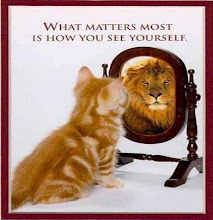

Get this in your mind and keep it there: It is the study method that makes the EXCEPTIONAL STUDENT!!!
 Fool's Mate:
Fool's Mate: Some Opening Principles and Chess Strategies
Some Opening Principles and Chess StrategiesInclude your speech title here
Audience
Analyze your audience. What do they already know about your topic? Are they interested in the topic?
Refine and limit topic
Based on your analysis of the audience you may need to slightly change your topic, by either changing the focus, or the scale of the topic.
Write down a clear statement of what it is you intend to achieve. What is the goal of your speech.
For example, you can write; The purpose of this speech is to inform the audience how to travel in Japan without spending to much money.
Thesis: (What is your major argument?)
Now, convert the purpose statement into a 'thesis statement'. A thesis statement is one sentence in the introduction in which you declare your purpose and topic.
For example, a thesis statement of the above purpose statement would be; 'Traveling in Japan need not be an extravagance.'
I. Introduction
A. Greeting: "hello, my name is ....."
B. Attention getter: think of a sentence that will make the audience sit up and listen.
C. Credibility statement: this means explaining to the audience why you are 'qualified' to speak about the subject.
D. Thesis statement: see above
E. Preview of main points: what are your main points? Tell your audience why you think your presentation will be useful to them.Transition: think of a sentence that will make it clear to the audience that you have finished the introduction, and are now about to start the body of the speech.
II. Body: Main Points #1, #2, #3
Main ideas | Supporting ideas | Details & Examples | Visuals |
| Write your main points and ideas here | What ideas will you tell the audience to support your main points? | What details or examples do you have? | Will you have any visuals to help explain your points? |
Transition: think of a sentence that will make it clear to the audience that you have finished the body and are now coming to the end of the speech.
III. Conclusion
A. Signal closing: "and in conclusion...."
B. Restate thesis
C. Review main points: summarize your main ideas and think of which piece of information you really want the audience to remember.1. Main point #1
2. Main point #2
3. Main point #3D. Memorable statement or call to action: think of a final sentence to help the audience remember your speech.
E. Thank audience for listening
Remember to: smile, make eye contact with most friendly audience, look confident, keep good body posture, and use hand/facial gestures to signal main points (thumbs-up).
Bibliography
Be sure to include non-print expert sources (e.g., those experts you have interviewed or heard on a broadcast).
Use a standard format such as APA, MLA, or Turabian. (URLs are not sufficient.) Go to the APA Style Wizard for assistance at http://www.stylewizard.com/index.html
The human body contains more than 700 muscles, but few of those are used by speakers – except when using their arms and fingers in a life-preserving clutch of lecterns and laser pointers or frenetically clicking on PowerPoint slides. Speakers tend to focus most of their efforts in search of the perfect word to illustrate their precious points, despite overwhelming evidence proving that, in fact, our bodies speak louder than words.
Your effectiveness as a speaker is directly related to your ability to invoke emotion and interest through the use of non-verbal communication. Your listeners judge you and your message based on what they see as well as what they hear. In public speaking, your body can be an effective tool for adding emphasis and clarity to your words. It’s also your most powerful instrument for convincing an audience of your sincerity, earnestness and enthusiasm. Whether your purpose is to inform, persuade, entertain, motivate or inspire, your body language and the personality you project must be appropriate to what you say. As Ralph Waldo Emerson said, “What you are speaks so loudly that I cannot hear what you say.” So be sure your appearance, posture and attire is appropriate as well.
Here’s how you can incorporate appropriate body language into your speeches:
 1. Never walk alone. Use the buddy system.
1. Never walk alone. Use the buddy system. 1. Long term Career Plan & Goals: 10yr – HS Diploma, AA, BA, MCAT, Med Sch, Residency
1. Long term Career Plan & Goals: 10yr – HS Diploma, AA, BA, MCAT, Med Sch, Residency
 The Keyword system is the most effective memory system for learning medical terms. I've provided examples below to show you how to use this method. A good time to use this system is when you have a term for which there is no readily-available mnemonic.
The Keyword system is the most effective memory system for learning medical terms. I've provided examples below to show you how to use this method. A good time to use this system is when you have a term for which there is no readily-available mnemonic.
 Dear Professor XXXXX
Dear Professor XXXXX Dear Professor XXXXX,
Dear Professor XXXXX, The aim of art is to represent not the outward appearance of things, but their inward significance.
The aim of art is to represent not the outward appearance of things, but their inward significance. Art is the desire of a man to express himself, to record the reactions of his personality to the world he lives in.
Art is the desire of a man to express himself, to record the reactions of his personality to the world he lives in. How can they say my life is not a success? Have I not for more than sixty years got enough to eat and escaped being eaten?
How can they say my life is not a success? Have I not for more than sixty years got enough to eat and escaped being eaten? Everything has been said before, but since nobody listens we have to keep going back and beginning all over again.
Everything has been said before, but since nobody listens we have to keep going back and beginning all over again. But now I have come to believe that the whole world is an enigma, a harmless enigma that is made terrible by our own mad attempt to interpret it as though it had an underlying truth.
But now I have come to believe that the whole world is an enigma, a harmless enigma that is made terrible by our own mad attempt to interpret it as though it had an underlying truth.
 Mac & Win Driver: http://www.iogear.com/support/dm/driver/GUB211#display
Mac & Win Driver: http://www.iogear.com/support/dm/driver/GUB211#display http://www.broward.edu/outlines/CGS1060C.pdf
http://www.broward.edu/outlines/CGS1060C.pdfThe Computer Competency Exam covers five essential areas of computer skills in which students need to be able to demonstrate competency:
Students should be able to perform the following tasks in MS-Word:
Students should be able to perform the following tasks in MS-PowerPoint:
Students should be able to perform the following tasks in MS-Excel:
Students should be able to perform the following tasks on the Internet:
Students should be familiar with the following computer concepts:
 Bottom-Line
Bottom-Line XP
XP ) icon, click All Programs , and then click Windows Photo Gallery .
) icon, click All Programs , and then click Windows Photo Gallery .
 Map the Main Argument for each Passage
Map the Main Argument for each Passage Elementary algebra is the most basic form of algebra. It is taught to students who are presumed to have no knowledge of mathematics beyond the basic principles of arithmetic. In arithmetic, only numbers and their arithmetical operations (such as +, −, ×, ÷) occur. In algebra, numbers are often denoted by symbols (such as a, x, or y). This is useful because:
Elementary algebra is the most basic form of algebra. It is taught to students who are presumed to have no knowledge of mathematics beyond the basic principles of arithmetic. In arithmetic, only numbers and their arithmetical operations (such as +, −, ×, ÷) occur. In algebra, numbers are often denoted by symbols (such as a, x, or y). This is useful because:  February 22, 2010
February 22, 2010




